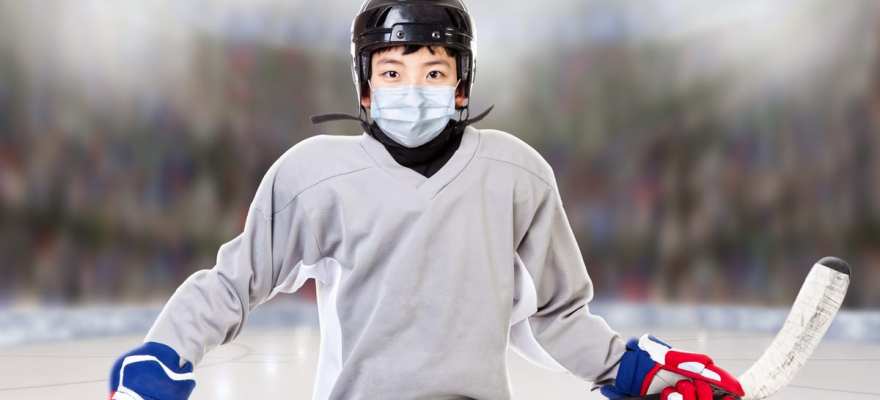
Updated Aug. 26: In a briefing on Monday, Aug. 24, Governor Andrew Cuomo said that lower-risk youth sports—like tennis, soccer, cross country, field hockey, and swimming—may practice and play beginning Sept. 21 as long as they follow Department of Health-issued guidance. No travel practice or play will be permitted outside of the school’s region or contiguous regions/ counties until Oct. 19. Higher risk sports with full-physical contact—like tackle football, wrestling, rugby, and ice hockey—can continue to practice but are not authorized to play.
How will youth sports be different?
When youth sports do start up—whether it’s at an interscholastic level or smaller, private leagues—they will likely look different. Team members will have to social distance, wear masks, and modify certain plays. After all, even the Major Leagues have called for radical new safety protocols, where every player must be temperature checked and an estimated 10,000 COVID-19 tests will be conducted every week.
The youth sports industry itself will also be changed. Many parents won’t be comfortable allowing their child to be on a team. Plus, with the ongoing recession, many families may not be able to afford league fees, uniforms, and other fees associated with youth sports. “There is not going to be that kind of discretionary income out there,” Dave Brown, owner of Basketball Stars of New York, says. The recession may also cause 20-40% of youth sports clubs to close, according to the Wall Street Journal.
The New York City Parks Department says it will not be issuing permits for youth sports leagues due to safety concerns, according to ABC7NY. Many families are dissatisfied with this decision and are teaming up with coaches and politicians to protest the decision so their children will have an outdoor place to participate in group sports. Permit advocates are saying that kids are playing all over the state just a few miles away, and that its unfair to city kids to hinder them from playing too. City Councilman Brad Lander says that the city should remember that these youth sports leagues are non-profits and small businesses.
NYC Parks issued the following statement in response:
“Our fields remain open for first-come, first-serve, socially-distanced play. We will reassess our ability to issue permits later in the fall.”
How to Play Youth Sports Safely
When it’s time for your kid to resume their position on the team, there are precautions to take. The CDC recently released youth sports guidelines on what teams and leagues can do to protect kids, which includes keeping six feet apart from others, wearing a mask when around other people, disinfecting equipment, and washing hands frequently.
While it may be a relief for some of the 20 million kids who play organized youth sports every year not to have to attend practices, many young athletes will be devastated by the loss. In that case, according to Patrick Mularoni, M.D., medical director of the Pediatric Sports Medicine program at Johns Hopkins All Children’s Hospital, parents should encourage their kid to continue training— with their family members or at a safe distance from peers. The exercise and routine will help them stay active and motivated, and it can help kids avoid the depression that befalls injured athletes when they have to give up playing.
Finally, this period may be a blessing in disguise—an opportunity to try something new try something new and take a break from an over-scheduled life. Maybe instead of lacrosse practice, they will go on more bike rides or learn to rollerblade. Maybe kids can join their parents for runs or walks. At best, your kid who was once accustomed to back to back practices after school everyday will be able to join the family for dinner more often.
Wanna read more stuff like this? Get our newsletters packed with ideas, events, and information for parents in Staten Island.

Read Next | Learn about All the Best Pre-school or Daycare Centers on Staten Island

